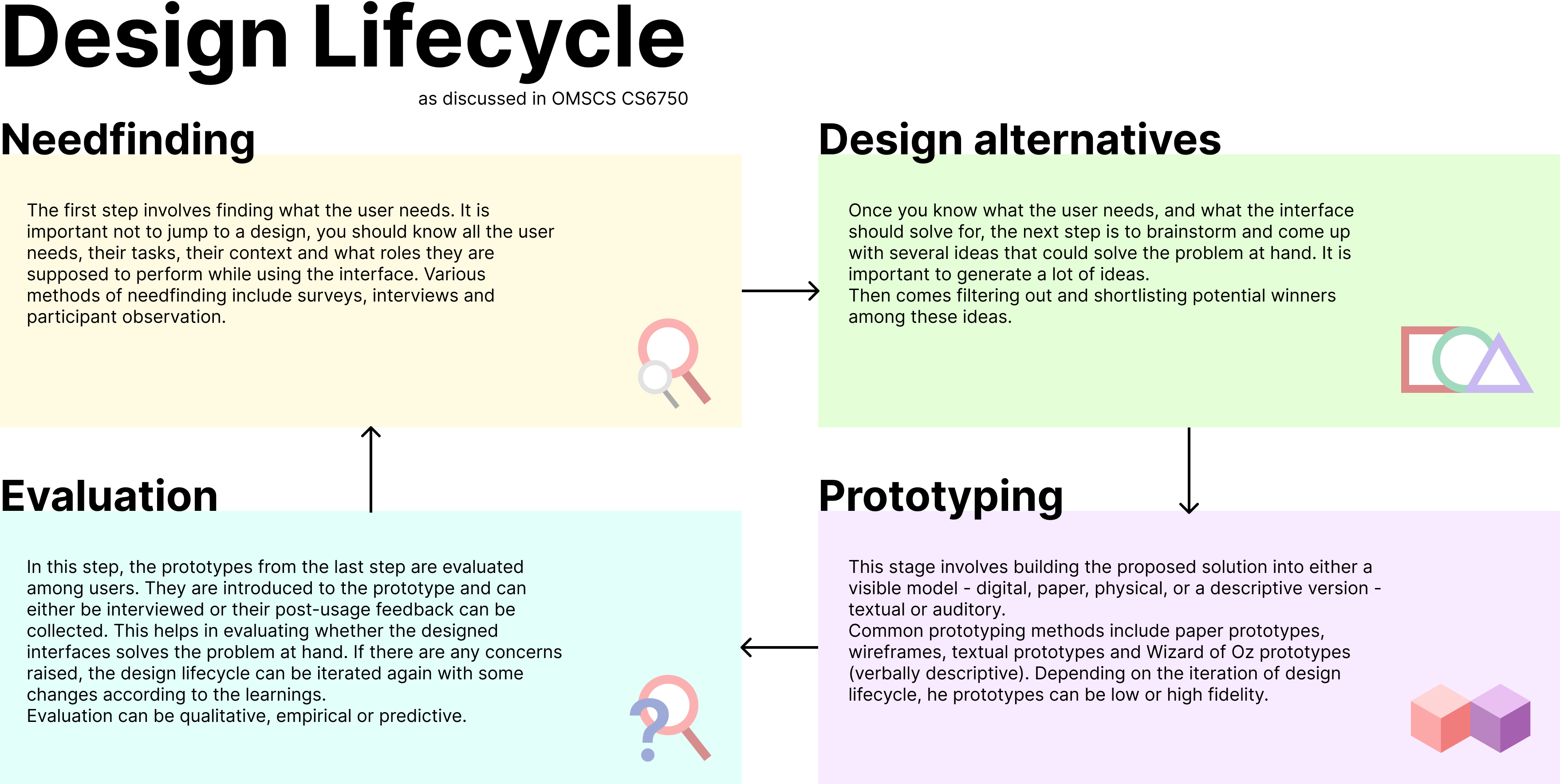| Property | Value |
|---|---|
| Difficulty | 2/5 |
| Effort | 4/5 |
| Prerequisites | None |
| Ease of registration | Easy |
This was the second course in OMSCS that I took during the Summer 2022 semester. I had read a lot of positive reviews about this one on Reddit and on the student's reviews website and had frequently read about how good Dr Joyner’s courses were. HCI introduces important concepts around the process of designing interfaces that make interactions between humans and computers possible. It is very close to User Experience (UX) design but can be considered a level higher in the hierarchy.
Why should you consider HCI? #
We interact with numerous machines and computers in our daily lives, so much so that we even forget how things would be without them. If you have forgotten that in some domain of your life there exists a computer doing a part of your work, then it proves the device’s ease of use - all possible due to good implementation of HCI concepts. Similarly, you might also have a fair share of things that don’t work and are annoying to use - examples of badly implemented HCI.
Interfaces are everywhere and it is a high possibility that you work in a field that influences an interface used by several human users. Studying HCI will introduce you to a great framework for approaching solving such problems. It will teach you what makes an interface better suited for human users and how design can have a greater impact on society.
For me, it was a great learning as I could implement this framework at my work while I was working on the topic of improving the developer experience across the organization.
What is included in this course? #
As I mentioned earlier, HCI introduces the design lifecycle - a process that instructs how the task of designing or improving an interface should be carried out. The chapters that include this material are grouped under methods. Parallelly, the course also goes through what makes a good interface - grouped under principles. These two work in cohesion to finally produce an interface that works best for the users. It also includes a section to cover the larger impact of design under Interface and Politics. Towards the end, the course also goes over the Agile development process in brief.
In all, it is a perfectly structured course to introduce you to the world of HCI and there are valuable takeaways that you can implement in your work/career.
Following is a representation of the lifecycle that is very useful while building something new. A phrase that is repeated throughout the course is “You are not your user” which is so simple that it is often ignored because we want to jump to the final solution too quickly.

Your efforts #
As I took this course in the summer semester, I had to submit one written assignment per week throughout the 11 weeks of the class. These assignments were usually papers each 8 pages long, alternating between principles and methods in the course curriculum. In the method assignments (a.k.a. M assignments), I had to choose an interface and redesign/build it throughout the set.
The course has two tests each covering the first and last half of the curriculum respectively. Finally, there was the project - similar to the M assignments, but to be submitted as a whole. We had to redesign an interface and go through each stage of the design lifecycle, documenting our findings and finally producing an alternate interface. For summer, the evaluation stage (where we test our redesigned interface with the users) was skipped due to the limitation of time.
After each assignment, we also were presented with solutions from 3 of our peers for feedback. This peer-feedback helps us know how we did on our assignments and also gathers participation points that have a share in the final grade. The forum was very active throughout the course and it greatly improved the overall experience in the course.
The video lectures are truly engaging with Professor Joyner adding humor elements every now and then. I loved watching them. In addition to this, we had a set of weekly readings which were papers and excerpts from books related to the topic. These took some time to read, I usually read them in the week before the exams, but they were interesting extension to the course material.
Takeaways #
My two main takeaways from this semester were - the design lifecyle and the impact of design on politics of society. I have an improved perspective towards the process of building a product and how it could be good or bad for the people who’d use it eventually. I am becoming more interested in the ethics of interfaces I see around me and am trying to implement these learnings in my work.
Summer has also taught me to schedule things properly. There were times when I was rushing to complete the assignment very close to the deadline (too often). I found great help in joining a local meetup group called Shut Up and Write in Berlin, I’d then keep these 2 hours solely for writing my assignment papers. It was a great help! Off to my small break before the fall semester. See you again later.